Search Definition
The parameters in the Data Search form, define a search ellipsoid or sphere used to select samples for modelling. That is, the samples that will be used to calculate the estimated value.
Style
Ellipsoidal
Enter a Radius that will be used with other parameters to define the dimensions of a search ellipsoid. Optionally define how the search will be conducted sector-by-sector (See 'Radius' and 'Parameters' below).
Spherical
Enter a Radius to define the size of a sphere that will be used for the search. Optionally define how the search will be conducted sector-by-sector (See Parameters below).
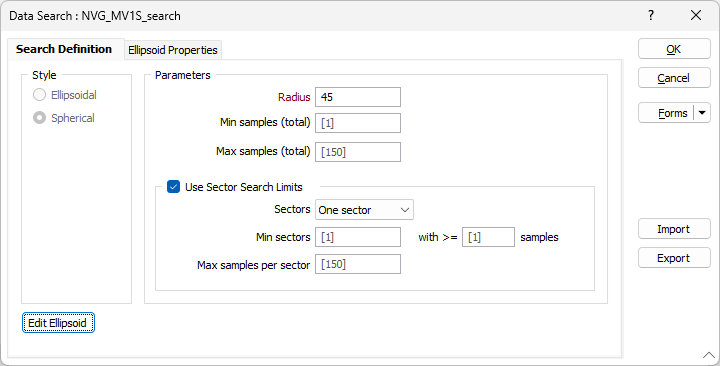
Parameters
Radius
Enter the radius of the search sphere or the primary radius of the search ellipsoid.
For a search ellipsoid, this value is a length or distance that becomes the base value by which the three axis factors are multiplied to determine the dimensions of the ellipsoid.
Min samples (total)
Enter the minimum total number of samples for the search (across all sectors/holes).
Max samples (total)
Enter the maximum total number of samples for the search (across all sectors/holes).
Default values for Min samples (total) and Max samples (total) will be automatically updated to reflect any sector-search settings defined.
Use Sector Search Limits
Select the option to enable the options for the sector search parameters.
Sectors
Select the number of sectors the search shape will be divided into for the data search.

The sector numbering starts from 1 and increases clockwise from 12 o'clock (in Plan view).
For OCTANTS, the shape is cut horizontally along the equator. The top half is numbered 1-4 and the bottom half is numbered 5-8.
For SIXTEEN sectors, the shape is also cut horizontally. The top half is numbered 1-8 and the bottom half is numbered 9-16.
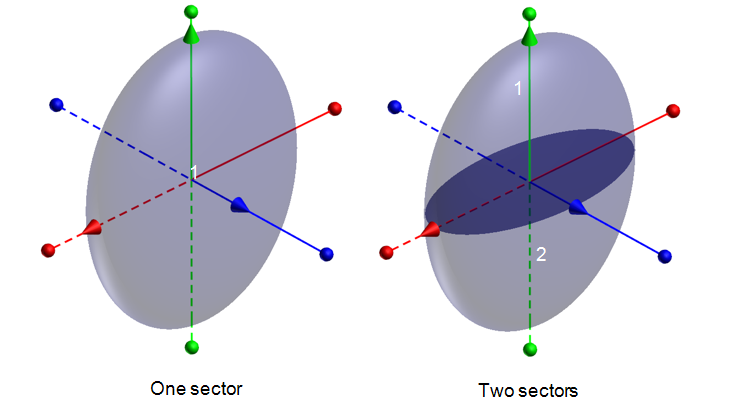
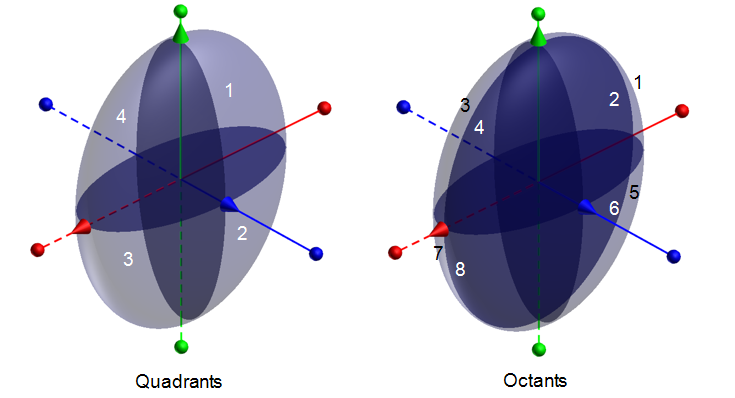
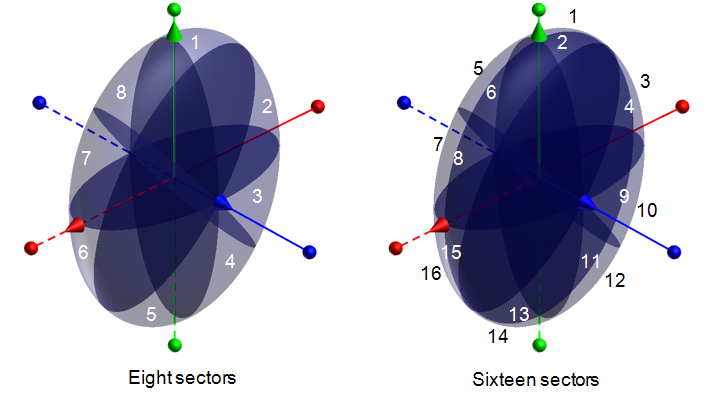
Minimum sectors
The Min sectors field is used to enter the minimum number of sectors with more than a specified number of samples for a sector to be considered filled. If this requirement is met, the calculation can proceed.
By default, the Min sectors value is always less than the number of sectors.
In the example provided for Min sectors above, if Min sectors ( = 3 (and samples per sector is >= 5), then all samples (and the entire block) will be ignored, because only 2 sectors are populated.
Since 2 sectors are populated, if the Minimum sectors = 2 and Samples per sector >= 5, then calculation for the block can proceed with:
| 5 | 0 |
| 0 | 6 |
Samples
The >= samples value allows you to apply a filter condition. Sectors with samples below the minimum samples per sector threshold will have all their samples removed.
For example, consider the case of quadrants with the following sample counts:
| 5 | 4 |
| 0 | 6 |
If samples per sector >= 5, then the filter will be to:
| 5 | 0 |
| 0 | 6 |
The Min sectors option determines whether all samples (i.e. the entire block) will be ignored.
Maximum samples per sector
The Maximum samples per sector is multiplied by the number of sectors to determine how many samples can be used within the overall search shape. By default, the maximum value is 150.
For example, if you choose QUADRANTS, the search shape is a sphere, and the maximum number of samples is 15; then the nearest 15 samples in each quadrant will be used, totalling 60. This option can eliminate the clustering effects of irregularly spaced data.
If you hover on a populated Data Search field, a pop up will display information on the parameters set for the selected search:
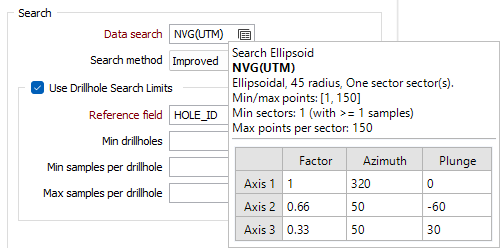
Forms
Click the Forms button to select and open a saved form set, or if a form set has been loaded, save the current form set.
Import
A Variogram Control File (*.mmvarx) provides a way of passing variogram information between Stats | Semi Variogram Map, Stats | Semi Variograms, and any function that need to reference a semi variogram as part of its modelling parameters.
Click the Import button to import data search orientations from a Variogram Control File. Select the name of the (*.mmvarx) you want to import from.
Export
Click the Export button to write the data search orientations you have set to a Variogram Control File. Enter or select the name of the (*.mmvarx) file you want to export to.
OK
Finally, click OK to define a search ellipsoid based upon the parameters you have specified in the form.